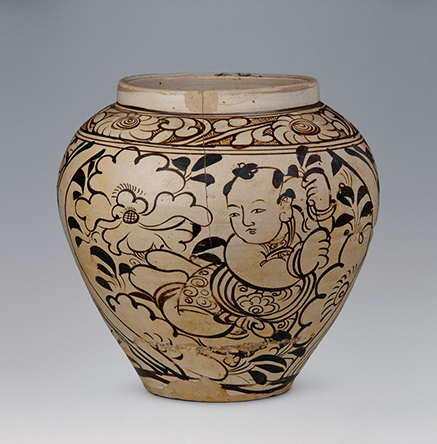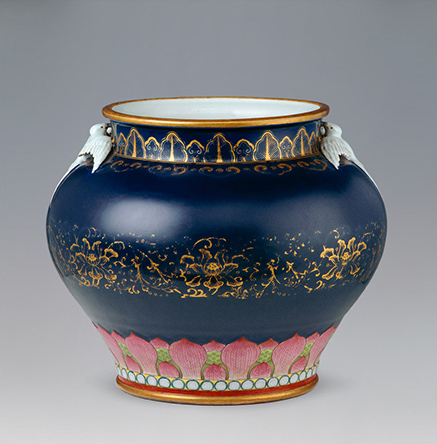Date: On permanent display
Venue: Galleries N20-N25, S15-S18, S20
One of the permanent exhibitions hosted by the National Museum of China, Ancient China is on display in altogether ten galleries. Using a large number of valuable cultural relics, it gives a complete picture of the long Chinese history from the prehistoric times to the late Qing Dynasty and shows in a comprehensive way the vitality and continuous evolution of Chinese civilization. It also demonstrates the historical process of building a multi-ethnic country by Chinese people from different ethnic groups, their splendid political, economic, and cultural achievements, and their contributions to human civilization.
This exhibition incorporates advantages of its forerunner, the exhibition entitled General Chinese History, and draws on the latest academic findings as well as advice from renowned Chinese experts. Ancient China features 2,520 objects, including 2,026 cultural relics, among them 521 being first-rate. These objects are grouped into eight sections: "Prehistoric Times", "Xia, Shang, and Western Zhou Dynasties", "Spring and Autumn and Warring States Periods", "Qin and Han Dynasties", "Three Kingdoms, Jin, and Southern and Northern Dynasties", "Sui, Tang, and Five Dynasties", "Liao, Song, Xixia, Jin, and Yuan Dynasties", and "Ming and Qing Dynasties".

I. Prehistoric Times
(c. 2 million years ago–c. 21st century BC)
The Lower Palaeolithic dates from about 2 million to 200,000 years ago. During that period, the early human species called Homo erectus lived in China. Early fossils discovered at numerous locations indicate that China was a key area of activity in human evolution. The earliest Homo erectus found in China, Yuanmou Man, lived about 1.7 million years ago. Somewhat later, Lantian Man, Peking Man, Yunxian Man, Hexian Man, and Tangshan Man emerged in other regions. Homo erectus used chipped stone tools and wooden sticks for hunting and gathering and also knew how to use and manage fire.

II. Xia, Shang, and Western Zhou Dynasties(c. 21st century–771 BC)
During the Xia, Shang, and Western Zhou period, China experienced the initial stages of state formation. Monarchical power was strengthened in dynastic changes. After moving the capital to Yin, the Shang Dynasty prospered. T Through the investment of lands to be ruled by a number of lords, Western Zhou kings consolidated their power and expanded their area of influence.
The political system that took shape during this period fostered economic and cultural growth and laid a strong foundation for Chinese society in the ensuing dynasties. Nevertheless, in the late Western Zhou, decline in monarchical rule gave rise to intense social conflicts and change became inevitable.

III. Spring and Autumn and Warring States Periods(770–221 BC)
In 770 BC, King Ping moved the Zhou capital to Luoyi (present-day Luoyang, Henan Province), an event marking the start of the Spring and Autumn and the Warring States Periods. This was an era of active thought, ethnic interaction, and political transformation. Rivalry between states during the Spring and Autumn Period had a dramatic impact on the political order established in the Western Zhou. In the Warring States Period, campaigns launched by the Seven Powers to overthrow and annex smaller states stabilized the inter-regional political and economic situation. This gradually laid the foundation for the unification and centralized government that emerged in the Qin Dynasty.

IV. Qin and Han Dynasties(221 BC–220 AD)
After centuries of wars between rival states, China entered a new era of unification under one empire beginning in the Qin and Han Dynasties. During this period, the emperor had supreme power over a centralized government led by “three statesmen and nine ministers” (but not limited to nine). At the local level, a system of jun (prefectures) and xian (counties) was introduced. The establishment of a centralized political system had a profound impact on later political development in China.

V. Three Kingdoms, Jin, and Southern and Northern Dynasties(220–589 AD)
After the fall of the Eastern Han Dynasty, three kingdoms—Wei, Shu, and Wu—dominated China. Following a brief period of unification in the Western Jin Dynasty, the country entered an era marked by coexisting multi-ethnic regimes. The south was controlled by a succession of powerful families ruling over the Eastern Jin and the Southern Dynasties. Ethnic rulers governed the north, establishing the Sixteen Kingdoms and the Northern Dynasties. There was unprecedented ethnic interaction during this period, laying the foundation for a unified multi-ethnic nation in the subsequent Sui and Tang Dynasties.

VI. Sui, Tang, and the Five Dynasties(581–960 AD)
After 300 years of division and ethnic integration, China entered an age of unity and prosperity near the end of the 6th century. The Sui and Tang Dynasties, with a western capital at Chang’an and an eastern capital at Luoyang, enjoyed a period of significant territorial expansion, active communication between ethnic peoples, improved legal institutions, and unprecedented economic and cultural achievements. This period marks another important stage in the development of a unified multi-ethnic country after the Qin and Han Dynasties.

VII. Liao, Song, Xixia, Jin, and Yuan Dynasties(916–1368)
A new political pattern began to take shape in the 10th century. The Han people established the Song Dynasty and ruled over lands stretching from the middle and lower Yellow River to the South China Sea. Later they were forced to retreat to the south, but maintained a dominant influence in economic and cultural spheres. In the north, the Qidan, Dangxiang, and Nüzhen peoples set up independent regimes, while the Tubo and Dali Kingdoms governed the southwest. This period of polarized multi-ethnic regimes ended in the 13th century when the Mongols rose up and unified China. Tibet and other regions became part of the Chinese territory. Despite incessant war throughout more than 400 years, communications between ethnic groups kept growing and China maintained close contact with the outside world.

VIII. Ming and Qing Dynasties(1368–1911)
In 1368, Zhu Yuanzhang (later known as Emperor Taizu) established the Ming Dynasty at Nanjing. In 1421, Emperor Chengzu moved the capital to Beijing.
Upon founding the Ming, Emperor Taizu formulated new laws and introduced reforms that concentrated the legislative, administrative, jurisdictional, military, and supervisory powers in his hands. Centralized authoritarian rule reached a new height.
The Qing Dynasty, the last imperial dynasty in Chinese history, was founded by the Manchus––an ethnic group from northeast China. The Manchus ruled for nearly 300 years from the time of the first leader Nurhachi to the last Qing emperor, Puyi. During the early period (from 1644 when the Qing capital was moved to Beijing until the breakout of the Opium War in 1840), the Manchu rulers established a central authority and achieved unprecedented consolidation and growth for a unified multi-ethnic China.

Opening Hours:
Tuesday - Sunday, 9:00 - 17:00
Closed on Mondays
Tickets issued until 15:30
Last admission at 16:00
Address:
East side of Tian’anmen Square,
16 East Chang'an Avenue, Dongcheng District,
Beijing 100006, P. R. China.
Admission:
The National Museum of China re-opened on
March 1, 2011.
Free admission
You can get a free ticket from the Ticket Office
at the West Gate by showing your valid ID
(passport).
E-mail: info@chnmuseum.cn

Jade phoenix pendantItem #: 02010031(Gold) / 02150001(Silver)
Material: Au.9999 / Ag.999
Size:6g
Price (Yuan): 3,330.00(Gold) / 238.00(Silver)
Source from: Fu Hao Jade phoenix pendant

Jade DragonItem #: 02010030(Gold) / 02150002(Silver)
Material: Au.9999 / Ag.999
Size: 6g
Price (Yuan): 3,330.00(Gold) / 238.00(Silver)
Source from: Hongshan Jade Dragon

Square vessel (fang zun) with four ramsItem #: 02050168 / 02050166
Material: Bronze
Size: High 10cm / 26cm
Price (Yuan): 980 / 4,500
Source from: Late Shang Square vessel (fang zun) with four rams Late Shang

Tomb figurine of a storytellerItem #: 02050127
Material: Pottery
Size: High 22cm
Price (Yuan): 2,200
Source from: Eastern Han Tomb figurine of a storyteller

Scarf of the vase showing a child playingItem #: 02120001
Material: Silk
Size: 50×50cm
Price (Yuan): 130
Source from: Cizhou ware vase showing a child playing

Caster of Basin with a fish pattern with a human faceItem #: 02030268
Material: Pottery
Size: 6cm/ 8cm
Price (Yuan): 988
Source from: Yangshao Basin with a fish pattern with a human face

Black Sancai-glazed Pottery HorseItem #: 02030109,02030110,02030114
Material: Pottery
Size: High 79cm / 44cm / 23cm
Price (Yuan): 8,500/ 750 / 280
Source from: Tang Black Sancai-glazed Pottery Horse

A cup of Bronze JueItem #: 02050110
Material: Bronze
Size: High 20x15cm
Price (Yuan): 810
Source from: Shang Bronze Jue

Cups and saucers of Hongshan Jade dragonItem #: 02030256
Material: Porcelain
Size: High 9.5cm
Price (Yuan): 1,998
Source from: Hongshan Jade dragon



















